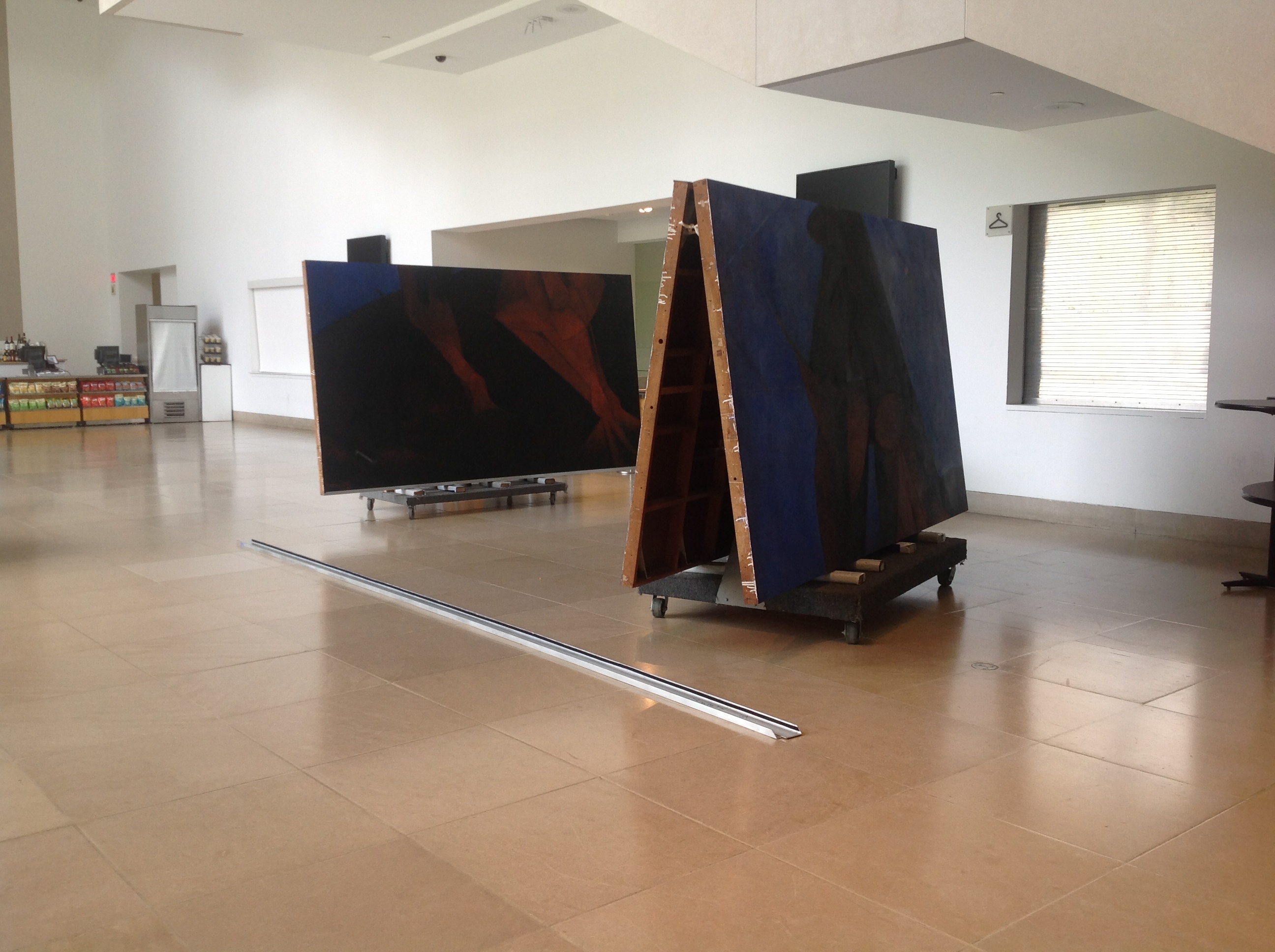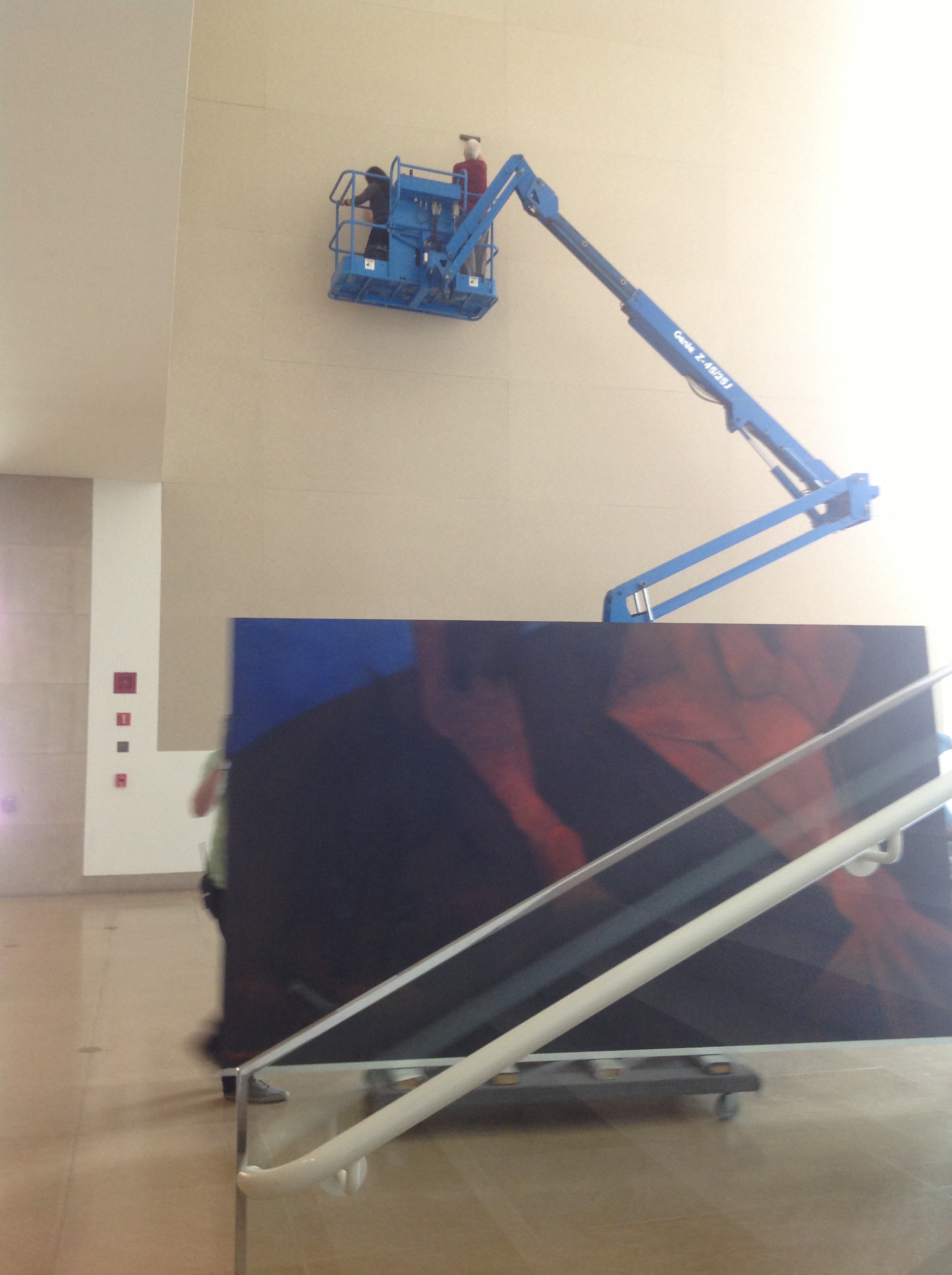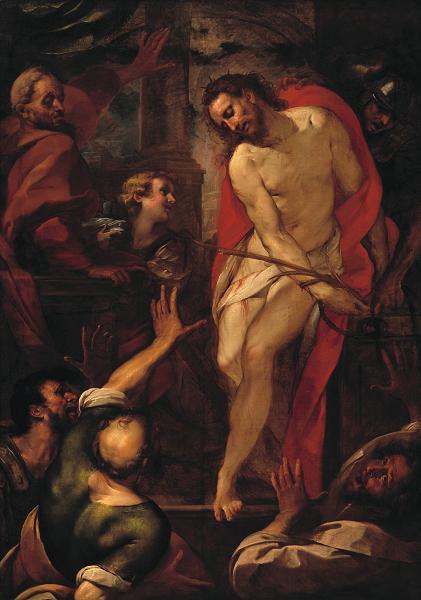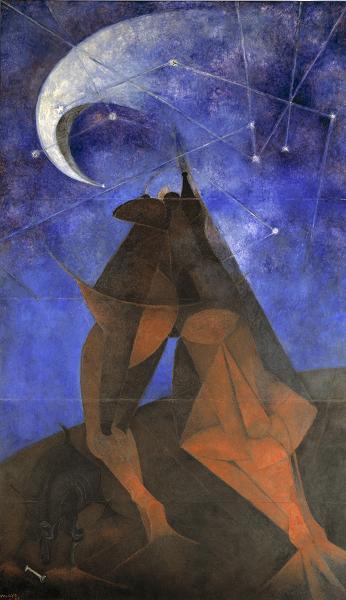After many years at the Museum’s Ross Avenue Entrance, Rufino Tamayo’s iconic mural El Hombre (Man) is returning to the Atrium, where it was first hung when the Museum’s Hamon Building opened in 1993.
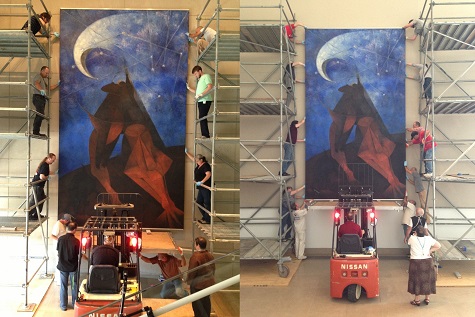
Rufino Tamayo’s El Hombre (Man) being de-installed from the Ross Avenue Entrance (left) and the rehanging in the Atrium (right).
Tamayo, born of Zapotec heritage in Oaxaca, Mexico, was one of the most prominent Mexican artists of the mid-1900s, and a contemporary of Rivera, Siqueiros, and Orozco. His mural has long been viewed as one of the DMA’s most important works. The tumultuous story behind it, however, inspires further appreciation.
Rufino Tamayo was a good friend of Stanley Marcus, then the president of the Dallas Art Association. In 1951, while on a trip to Amarillo, Tamayo and his wife, Olga, planned to drive to Dallas to visit the Marcus family, letting them know that they would arrive at 5:30 that evening. At 10:30 that night the Tamayos finally arrived, looking disheveled and disillusioned. When Marcus asked them about the delay, Tamayo told him about a car accident they were involved in, in which a local from Amarillo driving a pickup truck ran into them from behind. When the police arrived, it was determined that Tamayo was at fault for the accident, despite his claims and that the evidence suggested otherwise. Because of this unsettling experience, Tamayo told Marcus he would never produce art for the United States. By coincidence, Marcus had for some time wanted to secure Mexican art for the Museum to showcase the significant cultural contributions of the country’s artists, and he offered to commission a large-scale mural from Tamayo. Despite the Museum having only enough funds to pay one-third the normal price of his work, Tamayo accepted the commission as “a real gift of the heart from Mr. Tamayo to the museum.” He chose to focus his subject on the aspirations and potential of mankind.
When Tamayo completed El Hombre in the summer of 1952, he briefly showed it in Mexico City before shipping it by train to Dallas. Months later, however, the painting still had not arrived at the Museum. The search for the missing mural went on for over a year, when finally the stationmaster from a train station on the Mexico-Texas border called Marcus to inform him that they had found a large package addressed to him. The boxcar that the package had been traveling in had been shunted off the track on a spur, and had been sitting out in the elements all year*. Fortunately, when the mural finally arrived in Dallas in September 1953, it was found to be in surprisingly good condition, and El Hombre was put in a place of honor so that every visitor to the Museum would see Tamayo’s depiction of Mexican culture.
This week, on its journey down the Concourse to the Atrium, Tamayo’s El Hombre traveled much more safely this time around. Be sure to stop by the Atrium on your next visit to see this iconic work for free.
[youtube=http://www.youtube.com/watch?v=Gs1_c2Nr0rQ&w=560&h=315]
* [update August 2017] The source of this story is an oral history with Stanley Marcus, interviewed by Director Jay Gates October 27, 1994. However, documentation of the arrival of El Hombre at the Museum shows that the painting was only delayed by three and a half weeks, likely by flooding in areas along the railway. El Hombre was shown in Mexico City in August 1953, shipped from Mexico on August 17, 1953 and arrived in Dallas on September 9, 1953.
Jasmine Shevell is the Exhibitions & Publications Intern at the DMA.


